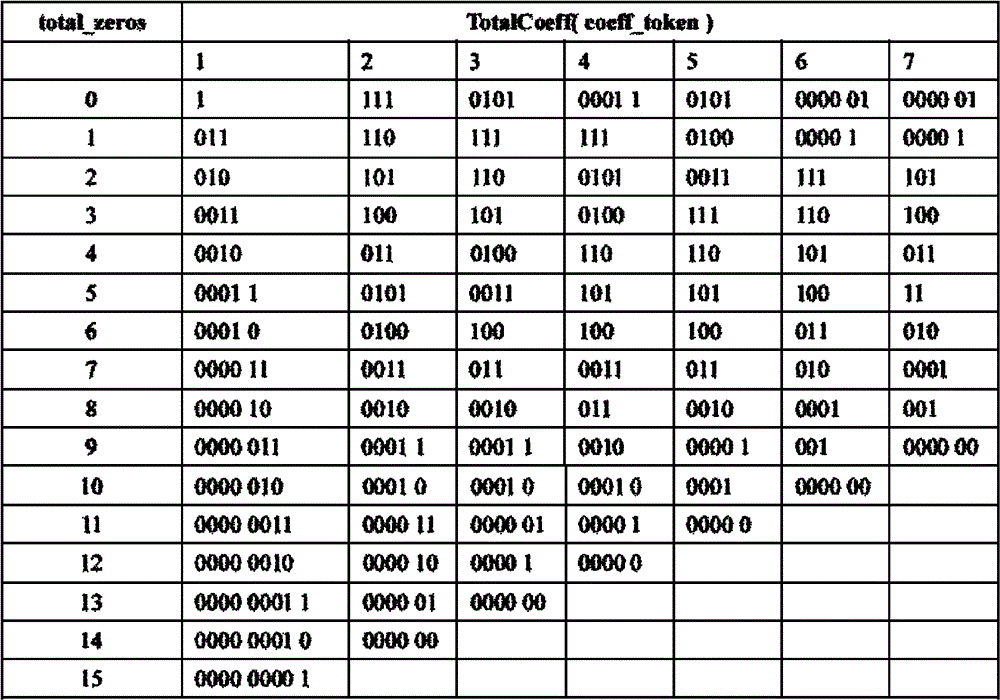Decoding method of adaptive variable length coding based on context and system thereof
An adaptive and contextual technology, applied in the field of variable-length coding decoding methods and systems, can solve problems such as inability to guarantee correct parsing, large storage space for decoding code tables, and impact on parsing efficiency, saving storage space and improving decoding efficiency. Effect
- Summary
- Abstract
- Description
- Claims
- Application Information
AI Technical Summary
Problems solved by technology
Method used
Image
Examples
Embodiment Construction
[0041] In order to enable those skilled in the art to better understand the solutions of the embodiments of the present invention, the embodiments of the present invention will be further described in detail below in conjunction with the drawings and implementations.
[0042] Firstly, the basic principles of CAVLC encoding and decoding in the prior art are briefly introduced.
[0043] CAVLC is used to encode the residual data of 4×4 blocks, the range of the number of non-zero coefficients is 0-16, and the range of the number of trailing coefficients is 0-3. If the number of ±1s is greater than 3, only the last three are treated as trailing coefficients, and the rest are treated as ordinary non-zero coefficients. The encoding of the number of non-zero coefficients and the number of trailing coefficients is realized by looking up a table, and the encoding table is a table in the standard protocol, which is different from the decoding table. There are 5 encoding tables to choose...
PUM
 Login to View More
Login to View More Abstract
Description
Claims
Application Information
 Login to View More
Login to View More - R&D
- Intellectual Property
- Life Sciences
- Materials
- Tech Scout
- Unparalleled Data Quality
- Higher Quality Content
- 60% Fewer Hallucinations
Browse by: Latest US Patents, China's latest patents, Technical Efficacy Thesaurus, Application Domain, Technology Topic, Popular Technical Reports.
© 2025 PatSnap. All rights reserved.Legal|Privacy policy|Modern Slavery Act Transparency Statement|Sitemap|About US| Contact US: help@patsnap.com



